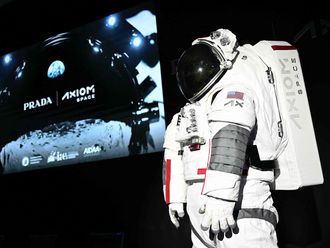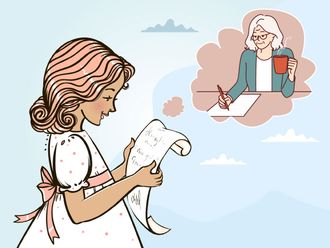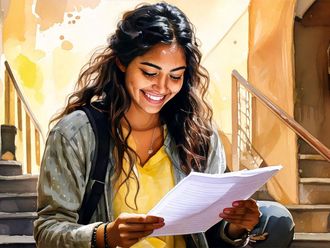"Most of the world knows of my husband, Nikolai Ignatiev as the Russian photographer and remembers him mainly for his documentary of the remote Velikaya River pilgrimage, shot in black-and-white.
He was also famous or rather infamous because of his rebellious nature. If these facts about him intrigue you, allow me to share more about him," says Juliet Butler, widow of Ignatiev.
"Nikolai's work was seen mainly in the New York Times, Time, Stern, The Sunday Times and Vogue, to name a few. Though these names sound glamorous and add a nice touch, the fact is that Nikolai's beginning wasn't as cushy.
Nikolai was born in Moscow in 1955. His father was a computer engineer and mother an English teacher. He studied economics, but that was not the profession he was to pursue. While at school, he had been told that he was not artistic. Though he read voraciously, he was not a writer ... though he observed, he could not paint.
So when, many years later in Moscow, he was asked to assist a Life magazine photographer as an interpreter he realised that he had found a way to escape the bureaucratic future as a Soviet economist that had been mapped out for him - he could take photos.
"Nikolai never liked to use a flash or to digitally change or set up any shot. He would always see an image as a naturally created moment in time, which he simply snapped with his battered old Leica camera in the light, colour and mood in which it appeared.
He walked through the world as if his eyes were a camera - and a blink of the eye was a photo shutter, which would capture that instant and freeze it forever on celluloid.
"Whether it was a single ray of sunshine, floating with dust particles and darting down into a Russian Orthodox church; a child lit from below by a quivering candle; or a bare room harshly lit by strip lighting, he would take the scene just as it was.
Nikolai photographed real life with real, unsuspecting people. He disliked any interaction with his subject because he saw this as throwing a pebble into a pool and spoiling the perfect reflection ...
"He didn't talk to them and didn't ask them to pose. That's what makes his pictures so appealing. It's as if he was not seen, as if he was an invisible chronicler of life in its most intimate moments.
Many of his photos look like oil paintings because he had an extraordinary ability to look at an everyday, apparently humdrum instant at some pinpoint of the world and see it for what it really was - a beautiful and lasting work of art.
"I think his best works are those he took of children around the world - from doe-eyed little girls in Iraq, to scrappy village kids in Siberia ... I believe this is because he travelled very often and for long periods of time away from his growing family and every time he saw a child he was reminded of our three children, whom he loved very much and missed.
This is why many of his best pictures, taken with a warmth and compassion - almost a longing - unusual in other images, are those of children, and they are the most touching.
"We met when I was 23 and he was 28. He was working as an editor ... he was a rebel and always dreamt of life beyond the borders of the Soviet Union. I was living in a foreign ghetto for Westerners walled off from the rest of the city and guarded by the militia, so we would meet for walks by the Moskva River. He would bring me flowers, chocolates ... and we quickly fell in love.
"When he started, Nikolai could only afford Russian Zenith cameras and he closed off the bathroom and used it as his developing room.
"Soon, because he was married to me and was the only Russian photographer brave enough to work for Western journalists, he began getting assignments from journalists for whom I was working as a nanny at that time - Newsweek, Time and the New York Times.
He was sent out on assignment and through his natural talent and tenacity ... he became much in demand in the days of the early 1980s (before Gorbachev's glasnost) when Western photographers were not being given visas to enter the country.
"At first he was refused permission to leave the country, despite being married to me in 1983, but after Gorbachev's openness campaign he was finally allowed to leave in 1988 to live in England.
He began specialising in reportage work abroad but since there was great demand for him to do assignments in Russia and because we had our first child in 1988, we moved back to Russia in 1992 and lived there for the next nine years. He travelled extensively but we were based with our growing family in Moscow and the children went to Russian schools.
"He was a person who was remembered at his memorial service as someone who was always happy, always laughing ... but he was a lone wolf, someone who made few true friends in life, a deeply private person.
"Sadly, even his force of will could not escape the 'black dog', as he called his cancer; forever appearing behind him just when he felt he had finally fooled it. He travelled abroad during his illness, in between bouts of chemotherapy, and took his two youngest children to Morocco seven months before he died (in June 2004). He took photos all the time.
"As for me, no wife and mother should ever have to go through the heartbreak of telling her children that their father has cancer, then six months later telling them he will probably not get better and six months on from that telling them he has died.
"He was buried in the family grave - Vagankovskoye Cemetery in Moscow, Russia. I think that after all his travels he would have wished to return home."
CAPTIONS:
Sheer purity ...
A picture by Russian photographer Nikolai Ignatiev, who died in 2004.
"He disliked any interaction with his subject because he saw this as throwing a pebble into a pool and spoiling the perfect reflection," says his widow Juliet Butler.
I will never forget... his will for truth
I will never forget... his will for truth











